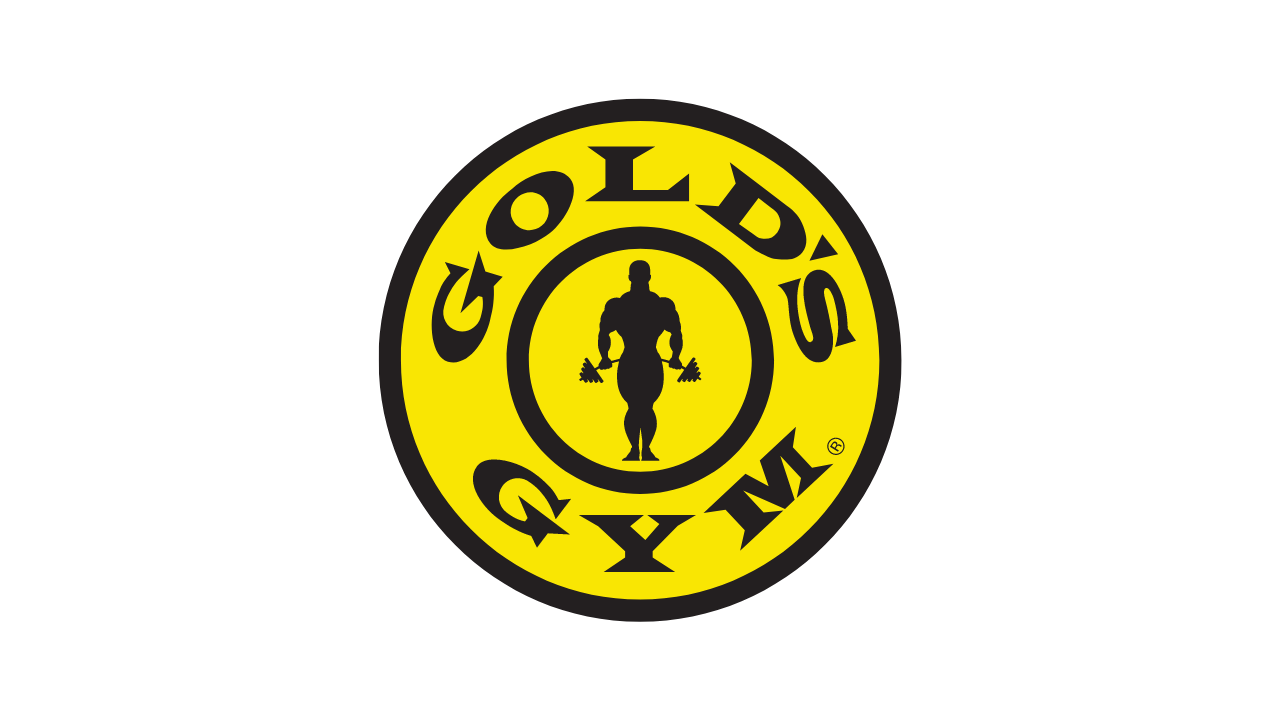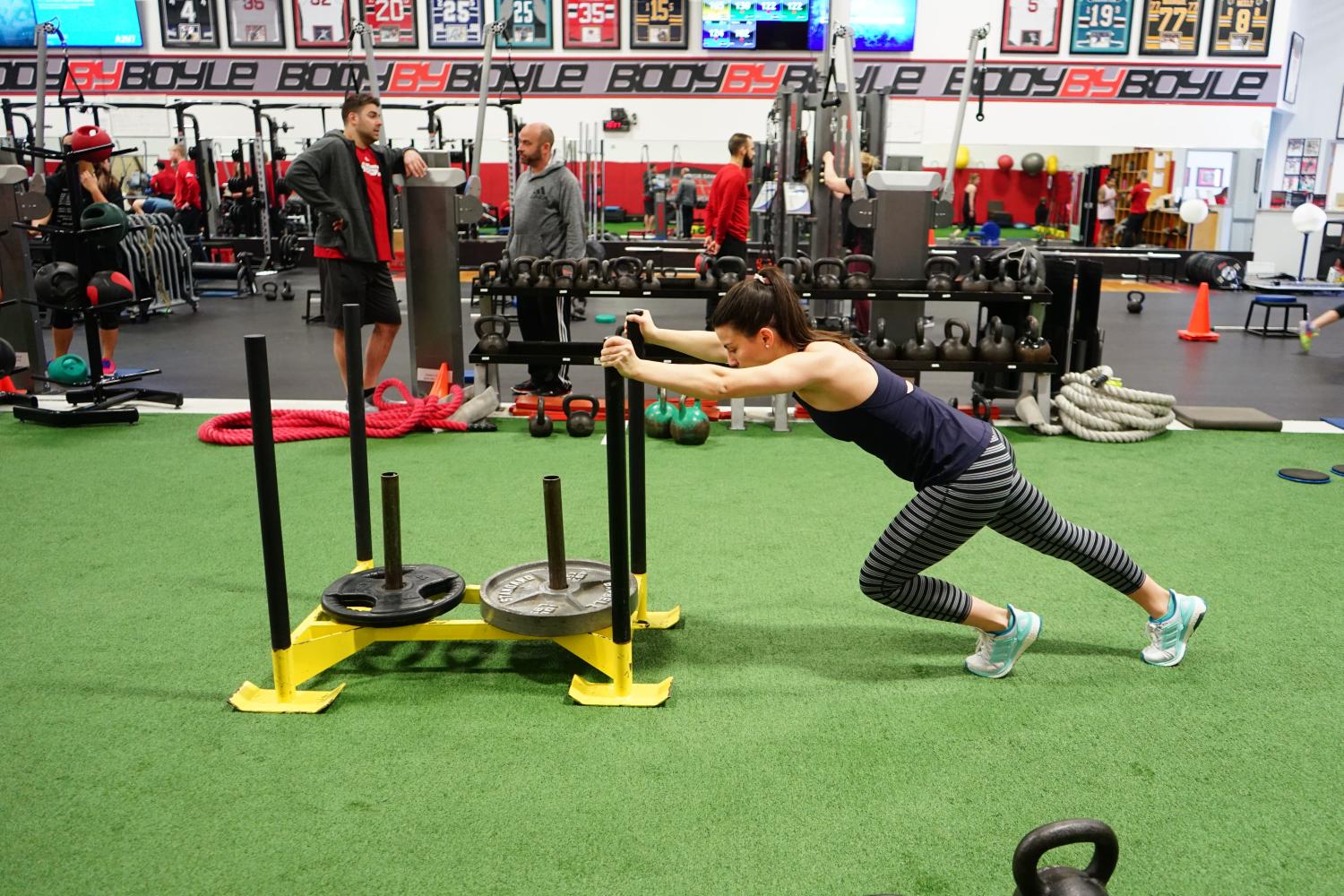How to Buy a Gym Business (10 Things You NEED to Know + Checklist)
Buying a gym business can be a great investment decision, but there’s a lot that can go wrong if you don’t follow all the steps in this ultimate guide on how to buy a gym business.

From due diligence to market research to gym staffing and training, there can be a lot to wrap your head around. Here’s everything you need to know about how to buy a gym. Purchasing a gym requires careful planning, financial analysis, and due diligence. Whether you’re looking at a gym building for sale, securing gym business loans, or searching for tips for buying a gym, this checklist will guide you through the process. Below is a step-by-step buying a gym checklist with key considerations and expert tips to ensure a successful acquisition.
| Step | Key Considerations | Pro Tips for Success |
|---|---|---|
| Evaluate Your Goals & Business Model | Decide on franchise vs. independent gym and define your target market. | Choose a gym model that aligns with your expertise and business goals. |
| Research Gym Listings | Check gym business listings, franchises, and gyms for sale by owner. | Work with a gym business broker for expert insights. |
| Assess Financials & Business Health | Review profit/loss statements, debt, and membership revenue trends. | Hire an accountant to review financials and detect red flags. |
| Inspect Gym Equipment & Facilities | Evaluate equipment age, maintenance costs, and necessary upgrades. | Plan for immediate repairs and future equipment investments. |
| Review Membership Base & Retention Rates | Analyze member churn rates, engagement levels, and revenue stability. | Use Exercise.com to manage memberships and improve retention. |
| Understand Lease & Property Terms | Understand lease agreements, property conditions, and expansion potential. | Consult a real estate expert to assess lease terms. |
| Secure Gym Business Loans & Financing | Compare gym business loan options, SBA loans, and financing terms. | Secure funding early to avoid delays in finalizing the deal. |
| Negotiate Purchase Price & Terms | Negotiate seller financing, payment terms, and contingencies. | Get legal assistance to protect your interests in negotiations. |
| Verify Gym Licenses, Permits, & Insurance | Ensure the gym complies with local regulations and insurance requirements. | Update gym policies and streamline operations with Exercise.com. |
| Plan Transition & Marketing Strategy | Develop a rebranding, marketing, and retention plan for new ownership. | Leverage social media, referral programs, and promotions to attract members. |
If you’re considering purchasing a gym, then having a structured plan is essential to making a smart investment. Whether you’re looking for a gym building for sale, securing gym business loans, or evaluating financials, using a buying a gym checklist can help ensure you make an informed decision. Get access to all the free fitness templates you need, including gym business valuation guides, gym contracts, gym budget templates, and gym financial planning resources to help with your purchase.
So, what are the most important tips for buying a gym? Start by reviewing a detailed buying a gym checklist to assess the gym’s financials, lease agreements, and membership base. Whether you’re securing gym business loans or purchasing a gym building for sale, it’s essential to evaluate revenue, equipment conditions, and operational expenses before finalizing your purchase. Understanding gym ownership responsibilities and reviewing existing gym staff contracts can also impact long-term success. With Exercise.com, you can manage memberships, automate billing, and optimize gym operations after acquiring your fitness business. Get a demo now and see how our platform helps gym owners streamline operations.
From following a structured buying a gym checklist to securing the best gym business loans, Exercise.com provides the best gym management software for fitness business owners. Whether you’re purchasing an existing gym or investing in a new gym building for sale, our platform helps streamline operations, increase revenue, and improve member retention. Once you buy a gym business, then check out the best gym software around and see why we have such amazing reviews. Get a demo now.

How to Find Gyms to Buy
Identifying potential gym businesses to purchase is often the best place to start. Each gym is unique, with unique factors related to the gym customer base, competitive positioning, and market demographics.
To find gyms for sale online, visit the following:
- BizBuySell (559 gyms for sale)
- LoopNet (535 gyms for sale)
- BizQuest (870 gyms for sale)
- BusinessesforSale (428 gyms for sale)
- American Gym Trader
- WeSellGyms.com
So, first of all, you should know just how profitable is owning a gym exactly. And you, being an astute business operator, have decided that all the excitement (and headaches) of learning how to open a gym is someone else’s game, because you want to buy an already existing (and profitable!) gym business.
Read More:
Analyze the Competition
Is there a similar fitness studio concept nearby? If so, how profitable is it? You can show up and find out! Take a class. Sit in the parking lot and count cars.
Is the closest CrossFit box over a 30 minute drive away from your desired location? Are there any local Facebook workout groups or boot camps that meet in local parks? If you work with youth athletes, are there schools close by? How many youth sports camps are in the same location? Youth sports leagues? Other rec facilities? You get the idea.

Yes, you can purchase market research, pay a consultant, and the like, but don’t discount what some real estate entrepreneurs call getting a feel for the place, walking it with your own two feet, and seeing the location with your own eyes.
Understand Industry Trends
This may seem too macro if you’ve just been walking around the neighborhood of a promising gym to buy, but before proceeding, it may behoove you to have a pulse on industry trends.
With the rise of online personal training, distance training, and other forms of hybrid fitness businesses offering both in-person and remote training, ask yourself if there is opportunity or caution for this particular gym business. Can you add on an online component?
Maybe other trends related to class types, programming choices, pricing, and other factors place you in a position to implement key changes that will quickly enhance profitability.
Conversely, you may be leery of buying a gym concept that is heavily fad-driven, as the headwinds you face with declining consumer interest will be too much to overcome in later years.
Choose a gym concept that will have staying power. The fitness studio TAM is enormous; there are plenty of options for fitness studio concepts that won’t go the way of the infamous Shake Weight.

Conducting Due Diligence When Buying a Gym
Okay, so you’ve found the market you are interested in to buy a gym, you’ve identified a gym to buy that appears promising, the gym owner is open to entertaining an offer, well… what do you do next?
Here are the key steps to take for due diligence when buying a gym business. One big tip: enlist the help of a professional advisor. This means attorney, CPA, experienced business broker, a capital partner, etc.
- Review Financials & Legal Documents – Your professional advisors will be invaluable here. Make sure the business post-transaction have adequate cash reserves, analyze any debts owed by the gym business, insurance coverage, surprise liabilities, etc.
- Examine Gym Equipment & Other Assets – Pay close attention to not only the condition of the equipment, but whether the equipment is actually owned outright by the gym, or merely financed or leased. Is it adequate for your needs? Will you require significant capital expenditures post-transaction?
- Assess Gym Membership Base – Here you will need to really make sure their record keeping is up to snuff. Actually verify that the gym members are real people paying real money. Analyze the subscription history for things like churn, expansion revenue, cohort analysis, etc. If you pay for a QofE (Quality of Earnings Report) from an accounting firm, this should be a key area of focus, because you want to understand the predictability and durability of these gym memberships. Basically, will they stick around post-sale?
- Meet Current Gym Owner(s) & Staff – Face time with the current owner(s) and staff is vital. Don’t be afraid to ask questions. What is great about your gym? What is an area for improvement? How would you categorize the gym members feelings about the gym location, programming, facilities, etc.?
Read More:
Financing the Purchase
Most likely you will need some form of financing to buy a gym. Sure, sometimes if you buy a distressed gym, or a very early stage sub scale gym business, or maybe you simply have the cash, then that could be the case, but generally speaking, you will need a loan to buy a gym.
Options for financing a gym business purchase include:
- Seller Financing – This is at the top of the list for a reason! The absolute best gym financing often comes via a seller note. If they want to sell their gym, then they are motivated to help get the deal done, so use gym seller financing as a lever in your negotiations. Just be aware that, like almost any form of debt, if you can’t make the payments, then the seller could eventually take the gym back.
- Small Business Administration (SBA) Loan – This is one of the most favorable gym loan options from an interest rate and other terms perspective. However, all SBA loans require you to personally guarantee the loan, usually even collateralizing with a lien on any equity in your personal residence.
- Other Traditional Bank Loans – Depending upon your personal net worth, banking relationships, experience as an operator, credit score, and a host of other factors, you may have other great traditional bank gym loan options.
- Investors – This can be a mix of debt and equity and take many different forms.
No matter which option you choose, be sure you understand the terms and requirements of financing options, and seek professional guidance from a qualified financial advisor.
Closing the Deal
Your attorney and/or business broker will help you navigate the following steps:
#1 Negotiate the Purchase Agreement
#2 Conduct the Closing Process
#3 Handle the Transfer of Ownership and Assets
Running and Growing the Gym Business
Building a strong management team, developing a marketing strategy, implementing operational best practices, and continually monitoring and analyzing key gym performance metrics are all key pillars to gym success.
Tips for Buying a Gym Successfully
✔ Gym business loans can provide funding, but securing financing early prevents deal delays.
✔ Gym business brokers can help evaluate listings and negotiate deals on your behalf.
✔ Unused gym memberships can be a hidden revenue opportunity—use Exercise.com to improve retention.
✔ Buying a gym business with strong membership engagement and active contracts is ideal.
📢 Need the best gym management software for your new business? Request a demo of Exercise.com today! 🚀

10 Things to Know Before Buying a Gym Business
Purchasing a gym can be an exciting yet complex endeavor. Whether you’re a fitness enthusiast or an investor, there are critical factors to evaluate before committing to the decision to buy gym business opportunities. Here’s a guide on the top ten things to know before buying an existing gym business:
#1 – Understand Why the Gym is for Sale
Before moving forward with a gym for sale, it’s essential to understand the seller’s motivations. Are they retiring, relocating, or is the business underperforming? This will give you insight into potential challenges or opportunities in buying an established gym.
#2 – Evaluate Gym Financial Health
A financial gym audit is critical to ensure the business is profitable. Review income statements, balance sheets, and cash flow statements. This step is vital when determining how much to pay to purchase gym assets. Using tools like Exercise.com’s gym management platform can help you centralize and streamline financial reporting after the acquisition.
#3 – Assess Gym Member Retention and Acquisition
Gym success hinges on its members. Investigate gym retention rates, membership trends, gym member complaints, and gym member acquisition strategies. If you’re taking over a gym with outdated systems, Exercise.com’s member management features can make the transition seamless while providing innovative ways to boost retention.
#4 – Understand Gym Equipment and Facility Conditions
When a buyer assume gym assets, the condition of equipment and facilities can affect operational costs. Inspect the equipment’s age, maintenance records, and remaining lifespan. Factor in potential upgrade or repair costs as part of your due diligence. Exercise.com’s asset tracking features can help you manage and maintain your equipment efficiently.
Read More: Gym Equipment Maintenance Guide
#5 – Check Gym Legal and Operational Documents
Ensure all contracts, permits, and legal agreements are up-to-date. This includes lease agreements, employee contracts, and vendor agreements. A gym business broker can help ensure nothing is overlooked during the gym procurement process. For ongoing operations, Exercise.com’s software can manage everything from client waivers to automated invoicing.
Read More: Gym Legal Guide
#6 – Ask Key Questions
There are essential questions to ask when buying a gym, such as:
- What are the main revenue streams?
- How many active members are there?
- What is the average member tenure?
- What marketing strategies are currently in place?
These gym acquisition diligence questions help uncover the gym’s strengths and weaknesses, enabling you to plan improvements. Exercise.com offers marketing tools and analytics to boost revenue and attract more members.
#7 – Plan for Gym Financing
If you’re wondering how to finance a gym business, consider funding options like personal savings, bank loans, or SBA loans for gym purchases. The Small Business Administration offers SBA loan for gym acquisitions, making it an excellent option for first-time buyers. Once purchased, Exercise.com helps you maximize revenue and profitability by offering flexible payment options for members.
#8 – Work with a Gym Business Broker
Experienced gym business brokers can guide you through the buying process. They help identify fair market prices, negotiate terms, and provide expertise when navigating contracts. Brokers often have access to listings, so they know where to buy a gym based on your preferences.
#9 – Evaluate the Gym’s Reputation
The gym’s reputation in the local community can make or break your investment. Research online reviews, speak with current members, and assess its brand recognition. Positive community perception is a strong indicator of long-term success when buying an existing gym business. To build on that reputation, Exercise.com offers tools for member communication, engagement, and branding.
#10 – Have a Clear Gym Business Plan
Even if you’re buying an established gym, you’ll need a solid gym business plan for growth (check out this free gym business plan template). Consider how you’ll enhance current offerings, improve gym member acquisition, and explore new gym revenue streams. Exercise.com can be your partner in growing your business by providing the most customizable gym management software to fit your vision.
By understanding these key factors and leveraging the right tools, you’ll be well-positioned to take over a gym and build a successful fitness business. Exercise.com is here to help you manage, market, and grow your gym for long-term success.

What are the key factors to consider when looking to buy a gym business?
When looking to buy a gym business, consider the following key factors:
- Location: Evaluate the gym’s location for accessibility, visibility, and potential market demand.
- Financial performance: Analyze historical and current financial statements to assess the gym’s profitability and financial health.
- Membership base: Review the size, demographics, and retention rate of the gym’s membership base.
- Competition: Research local competition and market saturation to understand the competitive landscape.
- Equipment and facilities: Inspect the gym’s equipment and facilities to ensure they are well-maintained and up-to-date.
- Staff: Assess the quality and experience of the gym’s staff and consider potential changes in personnel.
- Lease terms and conditions: Review the terms of the gym lease or property ownership, including rent, duration, and potential for renewal or expansion.
- Reputation and branding: Evaluate the gym’s reputation, branding, and online presence to gauge its market position.
What steps should I take when preparing to buy a gym business?
To prepare for buying a gym business, follow these steps:
- Research the fitness industry and local market to identify trends and opportunities.
- Determine your budget and financing options for purchasing a gym business.
- Create a list of criteria for your ideal gym business, including location, size, and target market.
- Search for gym businesses for sale through online listings, brokers, or industry contacts.
- Conduct due diligence on potential gym businesses, including financial analysis, equipment inspections, and lease reviews.
- Negotiate the terms of the purchase, including price, payment structure, and transition timeline.
- Obtain any necessary licenses, permits, and insurance for the gym business.
- Develop a plan for managing and growing the gym business after the purchase is complete.
What are the financing options available for buying a gym business?
Financing options for buying a gym business may include:
- Traditional bank loans: Banks may offer loans for purchasing a gym business, with terms based on your creditworthiness and the gym’s financial performance.
- SBA loans: Small Business Administration (SBA) loans can provide lower interest rates and longer repayment terms for eligible borrowers purchasing a gym business.
- Seller financing: The gym’s current owner may agree to finance a portion of the purchase price, with repayment terms negotiated between the buyer and seller.
- Home equity loans or lines of credit: If you own a home, you may be able to use its equity to secure a loan or line of credit for purchasing a gym business.
- Personal loans or credit cards: In some cases, personal loans or credit cards can be used to finance a gym business purchase, although this may not be the most cost-effective option.
How do I conduct due diligence when buying a gym business?
When conducting due diligence on a gym business, consider the following steps:
- Review financial statements: Examine profit and loss statements, balance sheets, and cash flow statements to assess the gym’s financial health.
- Inspect equipment and facilities: Ensure the gym’s equipment is well-maintained and up-to-date, and evaluate the condition of the facilities.
- Verify licenses and permits: Confirm that the gym holds all necessary licenses, permits, and certifications required to operate legally.
- Review contracts and agreements: Examine any existing contracts, such as lease agreements, vendor contracts, and employee agreements, to identify potential liabilities or obligations.
- Assess the membership base: Analyze the gym’s membership data, including demographics, retention rates, and growth trends.
- Evaluate staff: Interview the gym’s staff to gauge their experience, skills, and commitment to the business.
- Research the competition: Analyze the local competitive landscape to understand market saturation and potential opportunities or challenges. 8. Assess the gym’s online presence and reputation: Review the gym’s website, social media presence, and customer reviews to evaluate its market position and brand strength.
- Consult with professionals: Work with a lawyer, accountant, and business broker to ensure a thorough due diligence process and to address any potential legal, financial, or operational concerns.
What is the process for transferring gym memberships and contracts when buying a gym business?
Transferring gym memberships and contracts typically involves the following steps:
- Review existing contracts: Examine the terms and conditions of existing membership agreements and other contracts, such as vendor and employee agreements.
- Negotiate the transfer: During the purchase negotiations, discuss the transfer of memberships and contracts with the seller, including any necessary modifications or termination clauses.
- Obtain legal advice: Consult with an attorney to ensure that the transfer of memberships and contracts is legally compliant and properly documented.
- Notify members and stakeholders: Inform gym members, employees, and vendors about the change in ownership and any potential changes to their contracts or agreements.
- Update billing and payment information: Ensure that billing and payment systems are updated to reflect the new ownership and to maintain continuity of service for gym members.
How do I retain members and staff after buying a gym business?
To retain members and staff after buying a gym business, consider the following strategies:
- Communicate openly: Keep members and staff informed about the change in ownership and any potential changes or improvements to the gym’s operations.
- Maintain a high level of service: Ensure that the quality of the gym’s services, amenities, equipment, and facilities remains consistent or improves after the purchase.
- Engage with members and staff: Listen to feedback and concerns from members and staff, and address any issues promptly.
- Offer incentives: Provide incentives, such as discounts or loyalty programs, to encourage members to renew their memberships and staff to remain with the business.
- Foster a positive culture: Create a welcoming and supportive environment that encourages a sense of community among members and staff.
Should I hire a business broker to assist with buying a gym business?
Hiring a business broker can provide several benefits when buying a gym business, including:
- Expertise: Business brokers have industry knowledge and experience, which can help you identify potential gym businesses for sale and navigate the purchase process.
- Access to listings: Business brokers may have access to gym business listings that are not publicly advertised, increasing your options for potential purchases.
- Negotiation assistance: A business broker can assist with negotiating the terms of the purchase, including price, payment structure, and transition timeline.
- Due diligence support: Business brokers can help coordinate the due diligence process, ensuring a thorough investigation of the gym’s financial, operational, and legal aspects.
- Time and effort savings: Working with a business broker can save you time and effort by streamlining the gym business search and purchase process.
However, hiring a business broker also comes with costs, such as fees or commissions. Weigh the benefits and costs to determine whether a business broker is the right choice for your gym business purchase.
How do I create a business plan for my newly acquired gym business?
Creating a fitness business plan for your newly acquired gym business involves the following steps:
- Executive summary: Provide an overview of your gym business, including its mission, goals, and ownership structure.
- Company description: Describe your gym’s services, target market, and unique selling points.
- Market analysis: Analyze the local fitness market, including trends, competition, and potential opportunities or challenges.
- Marketing strategy: Outline your plans for promoting your gym business and attracting new members, such as advertising, social media, and special promotions. 5. Operations plan: Detail the day-to-day operations of your gym, including staffing, facility management, and member services.
- Financial projections: Provide financial forecasts for your gym business, including projected revenue, expenses, and profitability.
- Management structure: Describe the management and organizational structure of your gym, including the roles and responsibilities of key personnel.
- Growth and expansion plans: Outline your plans for future growth and expansion, such as adding new locations, services, or equipment.
- Appendix: Include any additional documents or information relevant to your gym business, such as market research, financial statements, or lease agreements.
A well-prepared business plan can help guide your gym business’s growth and success, while also serving as a valuable tool when seeking financing or partnerships.
How can I make a smooth transition after buying a gym business?
To ensure a smooth transition after buying a gym business, consider the following steps:
- Communicate with the seller: Maintain open lines of communication with the seller throughout the transition process, addressing any questions or concerns that may arise.
- Establish a transition timeline: Work with the seller to develop a timeline for the transfer of ownership, including key milestones and deadlines.
- Notify members and staff: Inform gym members, staff, and other stakeholders about the change in ownership and any potential changes or improvements to the gym’s operations.
- Review and update systems: Examine the gym’s existing systems and processes, such as billing, membership management, and staff scheduling, and implement any necessary updates or improvements.
- Maintain service quality: Ensure that the quality of the gym’s services, equipment, and facilities remains consistent or improves during the transition period.
- Offer support and training: Provide support and training to the gym’s staff as needed to ensure a seamless handover of responsibilities.
- Monitor progress: Regularly review the progress of the transition and address any challenges or issues that may arise.
By carefully planning and managing the transition process, you can minimize disruptions to the gym’s operations and set the stage for long-term success.
The Gym Owner’s Secret Weapon
Buying a gym is hard work, and so is running it, but we believe that “team work makes the dream work” as they say (one of those corny, but oh-so-true statements – ever been on an dysfunctional team? Yeah… exactly). Having the right gym software is an important tool to accomplish your gym growth goals. We help gym owners every day.

Reach out for a demo and see how we can help you.











